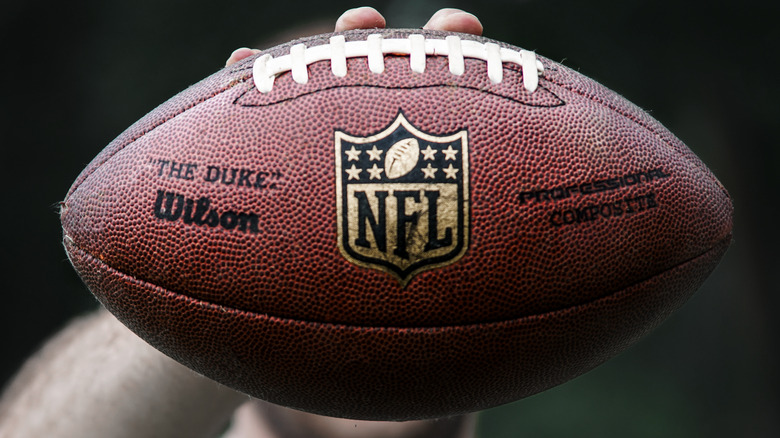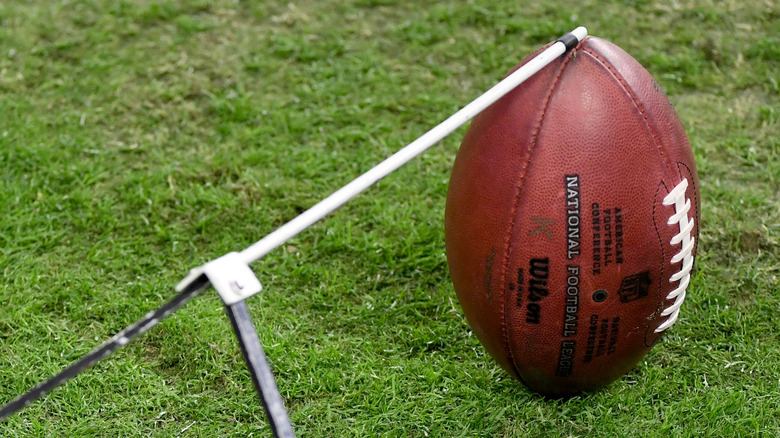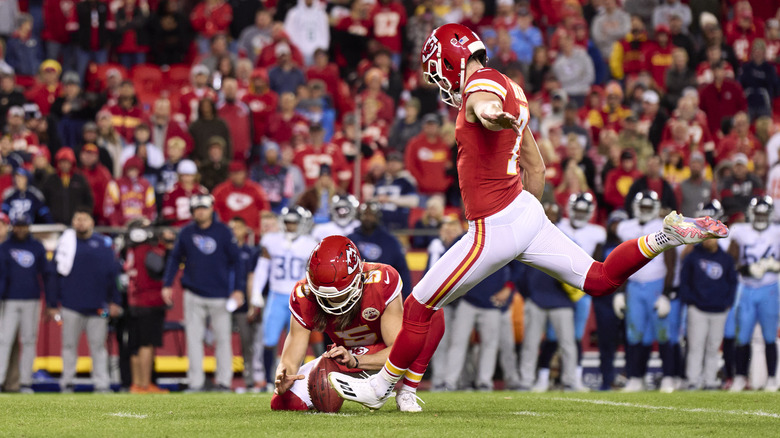Why The NFL Sends 6 Footballs Directly From The Manufacturer To The Referees Before Each Game
If you're remotely familiar with the National Football League, you're aware that it has rules for just about everything, and you probably also know the league often adjusts rules. Luckily, the NFL updates its 245-page rulebook to keep fans abreast of changes as they occur.
Unsurprisingly, there are even special rules about the footballs themselves. For example, they must be Wilson balls, which are hand-selected by NFL Commissioner Roger Goodell. Balls must also be a certain size: The long axis should be 11 to 11¼ inches, the long circumference is to be between 28 to 28.5 inches, and the short circumference can be between 21 to 21.25 inches. In addition, the ball must weigh between 14 to 15 ounces. Referees are responsible for determining if footballs fit the requirements before any games, and they are accountable for them until they are handed off to the ball attendant before a game begins. But there are even more rules for kicking balls, otherwise known as K-Balls (via Sportscasting).
K-Balls have special handling instructions
Prior to each game, six new footballs, meant exclusively for the kicking game, are "sealed in a special box and shipped by the manufacturer to the Referee," according to the NFL. The league explains that these balls go straight to the officials' locker room two hours and 15 minutes before the game begins, where they are approved. After approval, the K-Ball coordinator is responsible for the balls until 10 minutes before the game begins, where they are then handed off to the on-field replay station and distributed to the ball crew in the presence of security.
During random games, some K-Balls used in the first half are removed and inspected at halftime. They are removed from the game and replaced by one of the other backup balls for the second half of the game. These newly-selected balls are not delivered to officials until about three minutes before kickoff, per the NFL.
K-Balls are used to prevent players from doctoring them
If you're thinking the NFL has some rather tight regulations regarding K-Balls, it's not without good reason. Before K-Balls were used, kickers and punters would reportedly go to incredible lengths to break in a kicking ball. One technique included pumping a ball with too much air, putting it in a sauna, letting the air out, and then letting it soak up some sun (via Vice). Other measures included warming balls in microwaves, putting them in a dryer with wet towels, or soaking them in lemon juice. Former Jacksonville Jaguars kicker Mike Hollis told Vice he would put a ball between two plates and stand on the top plate in an attempt to soften it.
The NFL began using K-Balls in 1999 to prevent players from doctoring them, according to Sports Illustrated. Insider reports the reason any doctoring took place was because newer balls are stiff, slippery, and simply harder to control. Nowadays, players have just a few minutes to handle the ball prior to kicking it, and that may explain why you see them squeezing it, rolling it on the ground, or otherwise trying to manipulate it.


